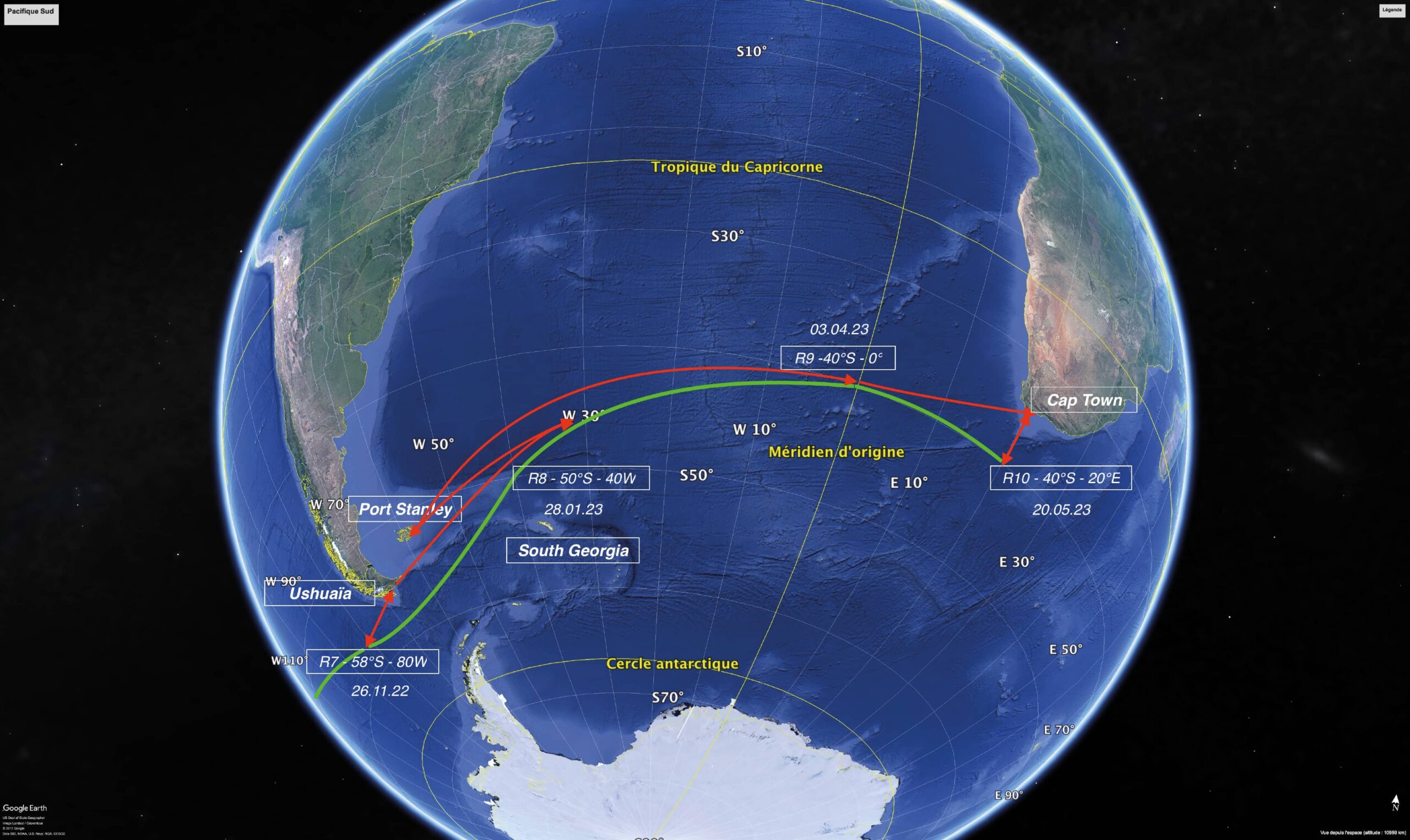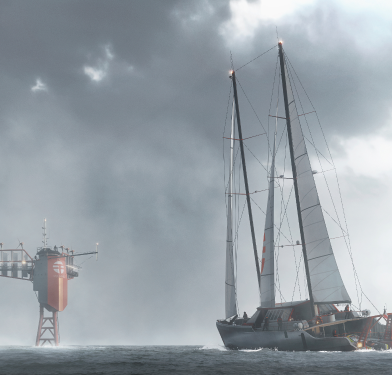The Polar POD aims to address one of the greatest challenges of our time: understanding and protecting the Southern Ocean, a pillar of the global climate and a major reservoir of biodiversity. Through an integrated approach combining cutting-edge science, international cooperation, and public outreach, this project follows in the tradition of expeditions led by Jean-Louis Étienne: exploring, understanding, sharing.
The Polar POD is a vertical oceanographic station, designed to drift for three years in the Antarctic Circumpolar Current. Motorless, powered by six wind turbines and maneuverable by sails, it is zero-emission. With its 80-meter draft and a 150-ton ballast, it offers unique stability, ideal for life on board and for atmospheric and oceanic measurements of exceptional precision, even in the extreme conditions of the “Furious Fifties”.
This platform will enable continuous and multidisciplinary observation: air-sea CO₂ exchanges, biodiversity inventory by acoustics, contaminants, and satellite calibration through in situ observations. It thus fills the critical data gap in this area, especially in winter. This data is essential for improving climate models and strengthening alert systems and environmental governance.
Coordinated by Océan Polaire, CNRS, IFREMER, and CNES, the scientific program brings together 43 institutions from 12 countries. It is fully integrated into the efforts of UNESCO’s Ocean Decade as well as the UN’s Sustainable Development Goals.
The overriging
question
The question was: what type of ship can provide a safe and comfortable work environment in the « furious fifties » throughout the year?


Technical Specifications
of the Polar POD
This 100-meter-high platform, weighing 1,000 tons when loaded, is designed to withstand the world’s largest waves.
The lattice legs are made of steel, 38 to 50 mm thick. The bottom ballast weighs 150 tons.
The gondola structure is aluminum and the outer hull is special steel, designed to withstand the most violent storms. The construction is certified by Bureau Veritas.
In the Southern Hemisphere, the Southern Ocean is not enclosed by continents; it is an open ocean that circulates around Antarctica. Driven by the westerly winds, the Antarctic Circumpolar Current (ACC) connects the three oceans: the Indian, Pacific, and Atlantic.
On the same principle, the Polar POD will be towed horizontally to the research zone and tilted vertically by filling ballast tanks with seawater.
To explore this ocean of storms, which sailors have christened the “Furious Fifties,” the naval engineering firm SHIP ST in Lorient designed the Polar POD.
Carried by the circumpolar current, like a satellite around Antarctica, the Polar POD will enable the acquisition of long-term data and observations, which will be transmitted to researchers, oceanographers, climatologists, and biologists; 43 scientific institutions from 12 countries are involved in the project.
This expedition, worthy of Jules Verne, will bring to life a major international educational project on Life, Earth, and Environmental Sciences in “real time” in collaboration with the International Union for Conservation of Nature (IUCN). Youth needs dreams, models of audacity, inspiring commitments, and the belief in their ambitions.
An expedition worthy
of Jules Verne


Drift
Circumpolar
Orbiting Antarctica, the Polar POD, driven by the Circumpolar Current, will circumnavigate the globe between 50° and 55°S.
This 24,000 km circumnavigation, at an average speed of 1 knot (1.8 km/h), is expected to last 2 years. Subject to headwinds and unfavorable currents, the POLAR POD will not follow a straight trajectory.
With its sails and a transverse thruster 10 m below the waterline, it has the ability to alter its course to steer clear of icebergs.




Crew relays
and refueling
Crews will be relieved every two months using Perseverance, an offshore supply vessel, which will be permanently assigned to the mission.
It will depart from the nearest port to join the Polar POD on its drifting course across the three oceans.


